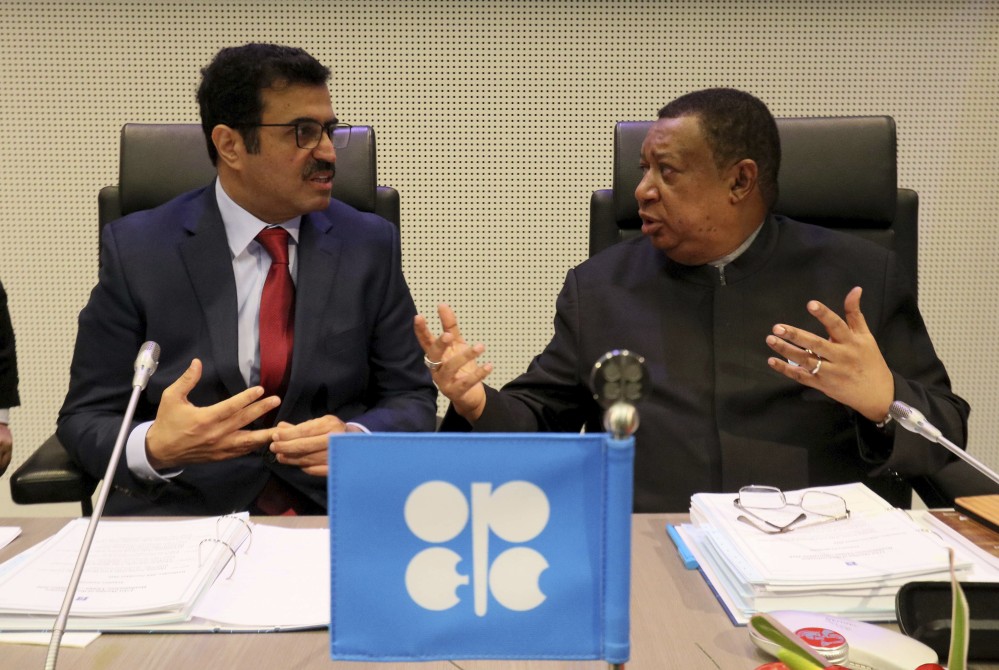VIENNA — Breaking with years of inaction, OPEC agreed Wednesday to cut its oil output for the first time since 2008. The move effectively scraps its strategy of squeezing U.S. competition through high supply that had backfired by lowering prices and draining the cartel’s own economies.
The reduction of 1.2 million barrels a day is significant, leaving OPEC’s daily output at 32.5 million barrels. And OPEC President Mohammed Bin Saleh Al-Sada said non-OPEC nations are expected to pare an additional 600,000 barrels a day off their production.
The combined cut will result, at least in the short term, in somewhat more pricey oil – and, by extension, car fuel, heating and electricity. The international benchmark for crude jumped 8.3 percent, or $3.86, to $50.24 on Wednesday.
In the longer term, however, analysts say it’s highly unlikely that oil will return to the highs of around $100 a barrel last seen two years ago. That’s partly because President-elect Donald Trump has promised to free up more oil drilling in the U.S., which would increase global supply. Demand is also not recovering as the world economy sags.
Playing tribute to “a historic moment,” Al-Sada said Wednesday’s move “will definitely balance the market and help (in) reducing the stock overhang.”
Al-Sada said the OPEC cutback is to take effect Jan. 1, with consultations planned on the exact timing of the non-OPEC reductions. Russia alone is committed to taking 300,000 barrels a day off the market.
With the production cut, OPEC will not only benefit from gaining more dollars per barrel. It can also lay claim once again to playing a part in influencing world prices.
And its tentative alliance with Russia and other non-OPEC nations may give it – and them – additional clout in future competition for market share with U.S. producers, which are sure to return in increasing numbers if crude prices move upward.
Wednesday’s decision was a departure from years of infighting among members refusing to give up their market share and a resulting series of inconclusive meetings.
In another reflection of new-found discipline within the cartel, Al-Sada said Indonesia’s membership had been suspended after it refused to accept its share of proposed output cuts, reducing the number of OPEC countries to 13.
Part of the focus after Wednesday’s decision is how well it holds. OPEC gave up assigning quotas in part because members have ignored them in their quest for petrodollars.
But officials were displaying new confidence. In comments addressed to naysayers about his organization’s relevance, Al-Sada said its decision “means the weight of OPEC and the resiliency of OPEC is still there and it will continue to be there.”
“Today’s unity is a very explicit sign about the position of OPEC,” he said.
Meetings to turn the planned non-OPEC cuts into reality are planned soon in Doha. From Moscow, Russian Energy Minister Alexander Novak confirmed his country’s readiness to pare 300,000 barrels from its output.
Al-Sada said the OPEC cutbacks are in effect for six months, with the option of renewal after a review by a five-nation committee set up to monitor compliance.
Still, analysts suggested price upswings would be relatively moderate – and the fallout minimal, at least for the United States. Sal Guatieri, senior economist at BMO Capital Markets, said oil should rise to an average of $53 a barrel next year.
For the U.S. economy, that’s “a sweet spot … a high-enough price to spur investment in the energy industry but not enough to seriously drain purchasing power” of consumers, he said.
“The losers are Europe and Japan – oil-importing regions of the world” with barely growing economies, Guatieri said.
Send questions/comments to the editors.



Success. Please wait for the page to reload. If the page does not reload within 5 seconds, please refresh the page.
Enter your email and password to access comments.
Hi, to comment on stories you must . This profile is in addition to your subscription and website login.
Already have a commenting profile? .
Invalid username/password.
Please check your email to confirm and complete your registration.
Only subscribers are eligible to post comments. Please subscribe or login first for digital access. Here’s why.
Use the form below to reset your password. When you've submitted your account email, we will send an email with a reset code.